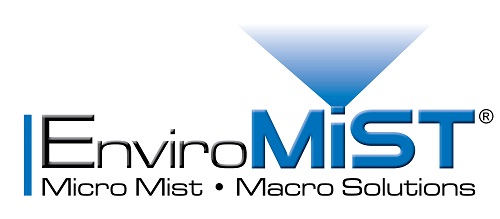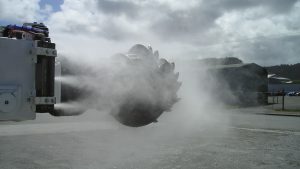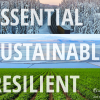Technology
New Development in Sustainable Dust Suppression Technology
The unique feature of our dual fluid – low pressure or single fluid – high pressure technology is the ability to atomize liquids into extremely small droplets and carry the droplets on a dynamic air stream.
By adjusting spray nozzles design, water and air volume as well as pressure we can control parameters and quality of mist the spray nozzles generate.
Mist droplets can vary in size from 3 microns to 150 microns to match the size of dust particles. By using high tech laser equipment, we can measure mist droplet sizes and distribution, which in turn enables us to determine the correct pressure and nozzle design required for the particular project.
Mist streams can be extended to reach different distances, depending on the spray nozzles design.
Our unique flexibility of spray nozzles design allows us to create optimal mist solutions for broad range of applications including crushing, conveying, transferring, loading and unloading.
Through applying our expertise and our custom designed spray nozzles and equipment, we can achieve high agglomeration of airborne dust particles.
Efficient mist-based dust suppression
To design an efficient mist-based dust suppression system our team of engineers and experts will work to determine:
- Mist Curtain Efficiency (depends on product and application requirements)
- Particle Size Distribution (PSD) and dust concentration
- Droplet Size Distribution (DSD )
- Spraying Nozzle design (air-water , water only)
- Inertia and momentum of dust particles and air
- Inertia and momentum of droplets
- Dynamic balancing of droplets with particle – air mixture
- Plant layout
- External factors influencing mist flow
Successful dust suppression, laboratory tested
For a successful dust suppression project we may carry laboratory tests to determine:
- Dustiness/ Dust Extinction Moisture (DEM) as per AS4156.6(2000)and I.S.EN15051 (2006) and
- Requirements for Total Particles Treatment based on
- Chemical composition
- Wettability
- Moisture retention
- Agglomeration
- Flowability (handleability)




